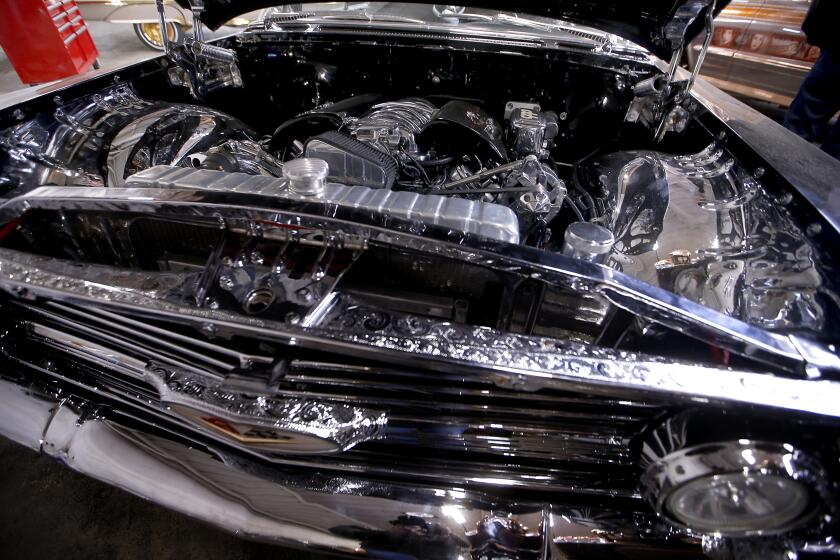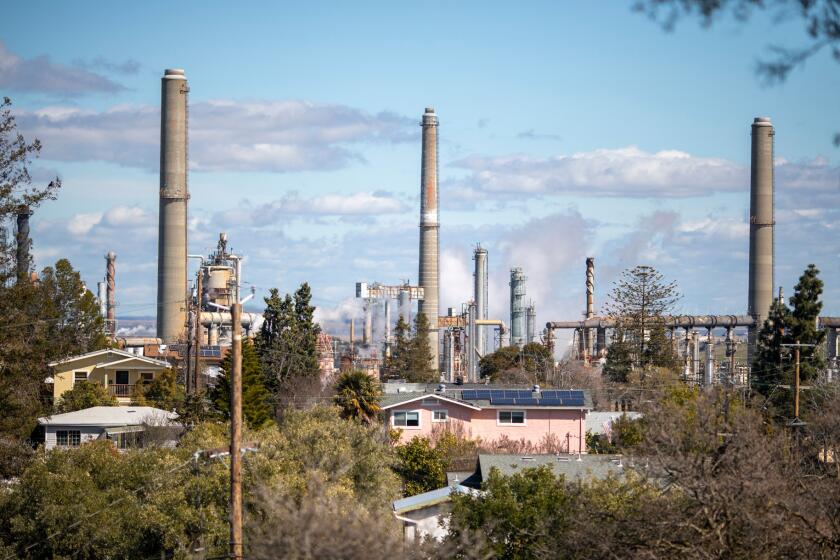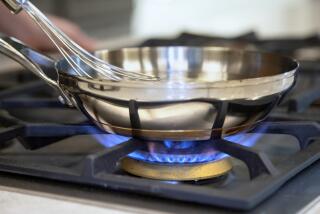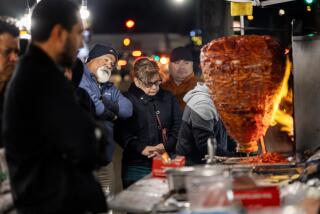Cooking with a gas stove may be as bad as breathing secondhand cigarette smoke, study finds
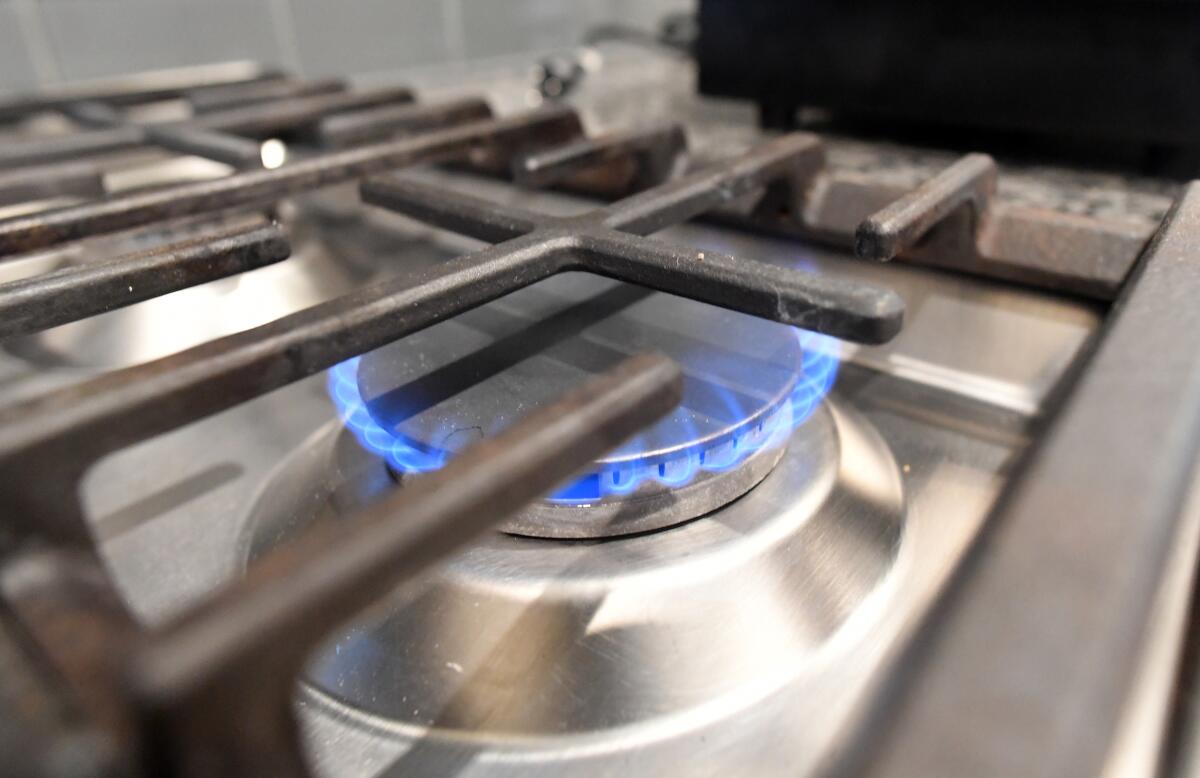
Cooking with gas-fired stoves can cause unsafe levels of toxics to accumulate inside homes, exposing people to roughly the same cancer risk as breathing secondhand cigarette smoke, according to a new study.
Researchers from Stanford University and nonprofit PSE Healthy Energy tested gas and propane stoves in 87 homes across California and Colorado and found that every appliance produced a detectable amount of cancer-causing benzene â a chemical with no safe level of exposure.
It took only 45 minutes for a single burner on high, or an oven set to 350 degrees, to boost benzene levels above well-established health base lines, according to the study, which was published last week in Environmental Science & Technology. In some cases, benzene levels exceeded concentrations found in secondhand tobacco smoke.
Scientists also found that benzene migrated well beyond kitchens, reaching unhealthy levels in other rooms and lingering within homes for hours. The toxic conditions, researchers found, were even worse in smaller homes, suggesting health risks may be worse for lower-income families with less square footage.
âThat ties into it being an environmental justice issue too,â said Yannai Kashtan, lead researcher and Stanford PhD candidate in Earth system science. âA lot of folks either canât afford to replace their stove, or maybe are renters and their landlord doesnât want to. Also, lower-income folks are more likely to be living in smaller spaces where the same emission rate is going to translate into a higher concentration.â
He met with residents who live near the former Exide battery plant and called for federal Superfund status.
Gas stoves have been a fixture in American kitchens for more than a century. But a growing body of research has exposed a plethora of contaminants and health consequences from cooking with gas.
The research â the first of its kind to examine benzene emissions from cooking â comes as politicians across the nation are sparring over the future of gas appliances in residential and commercial buildings.
Last year, the Los Angeles City Council voted to ban most gas appliances in new buildings, a move intended to mitigate gas energyâs contribution to global warming. New York, San Francisco and Seattle have passed similar regulations.
California air regulators have been considering phasing out gas appliances as well, to meet the stateâs ambitious climate goals.
But just last week, however, the Republican-controlled House passed a bill that would prevent the U.S. Department of Energy from banning gas stoves, a move the American Gas Assn. hailed, saying it protects a consumerâs right to choose.
Karen Harbert, president and chief executive of the American Gas Assn., a trade organization representing more than 200 local energy companies nationwide, said it is evaluating the study âto understand its methodology and the merits of its findings.â
âCustomers deserve access to transparent information and sound science to help make decisions about the health and safety of their families, and the natural gas industry continues to contribute objective, thorough and meticulous scientific analysis,â Harbert said in a statement.
Lately, the debate has shifted to potential health risks associated with indoor air quality. Previous studies have concluded that gas stoves produce nitrogen dioxide, a lung irritant linked to asthma and a precursor to smog. In households with gas stoves, scientists have also found a greater prevalence of childhood asthma and respiratory conditions, such as wheezing.
When methane and propane gas are fully burned, the only products are water and carbon dioxide. But when gas is only partially combusted, stoves can spew carbon monoxide; formaldehyde, a carcinogen; and benzene.
The study found that cooking at higher temperatures produced more benzene emissions. However, in an interesting twist, scientists also found that cooking with a smaller flame produced more benzene per joule of gas consumed.
California air regulators have voted to phase out the use of a highly toxic metal thatâs commonly used to restore classic cars and protect aviation parts.
Previous research by PSE Healthy Energy examined harmful emissions from stoves that were not in use.
Benzene, which is present in underground oil and gas deposits, was found to leak from gas ranges and pollute homes even when cooktop burners and the oven were turned off.
The most recent study, however, found that benzene concentrations from cooking were 70 to 640 times greater than the median leakage rates measured in idle stoves.
The researchers noted that pollutant concentrations indoors depended on ventilation conditions and home size. Many gas ranges are fitted with ventilation hoods that can reduce concentrations.
When asked to comment on the paperâs findings, the National Propane Gas Assn. released a statement saying that additional research is needed to assess indoor pollutants. It noted also that the Stanford-PSE Heathy Energy study did not address ventilation rates.
âIt does not propose that gas stoves are dangerous when used according to local guidelines,â an association spokesperson said. âThere are no facts or data in this study to suggest that a home ventilated in accordance with state regulations and manufacturersâ recommended guidelines would be dangerous.â
But researchers tested the use of ventilation hoods, finding it helped reduce concentrations, though in some cases benzene was still measured above health limits.
Nearly six months after Martinez Refining Co. released hazardous materials, officials have announced reassuring soil test results.
âItâs certainly helpful,â Kashtan said about ventilation hoods. âBut it doesnât guarantee that the pollution issue will be taken care of.
âOne could come up with scenarios where youâd get lower concentrations,â he added. âSure, if you have all the windows open. But on the other hand, weâre testing single ovens or single burners, so you certainly could come up with scenarios where you get higher concentrations.â
Opening windows while cooking might also help reduce the risk of exposure, so long as air quality outdoors is not poor â a big assumption for some places in California.
âIâm fortunate to live in the breezy Bay Area, where weâre opening a window most of the year and itâs not a big problem, except for the occasional wildfire smoke days,â Kashtan said. âBut ... in Bakersfield, downwind of a bunch of âBig Agâ and some of the largest oil fields in the state, opening a window is a whole different situation there.â
Ultimately, eliminating health risks would require a transition away from gas stoves. Researchers cooked with 13 electric induction stoves and did not detect any measurable amount of benzene.
But there are stopgap measures residents can take if buying an electric range isnât an option.
âItâs not all or nothing,â Kashtan said. âYou can get very inexpensive induction [cooktops] to reduce your reliance on the gas stove. There are a bunch of electric cooking appliances, air fryers, rice cookers, etc., that are sort of intermediate steps to reduce that source without eliminating it completely.â
Watch L.A. Times Today at 7 p.m. on Spectrum News 1 on Channel 1 or live stream on the Spectrum News App. Palos Verdes Peninsula and Orange County viewers can watch on Cox Systems on channel 99.

